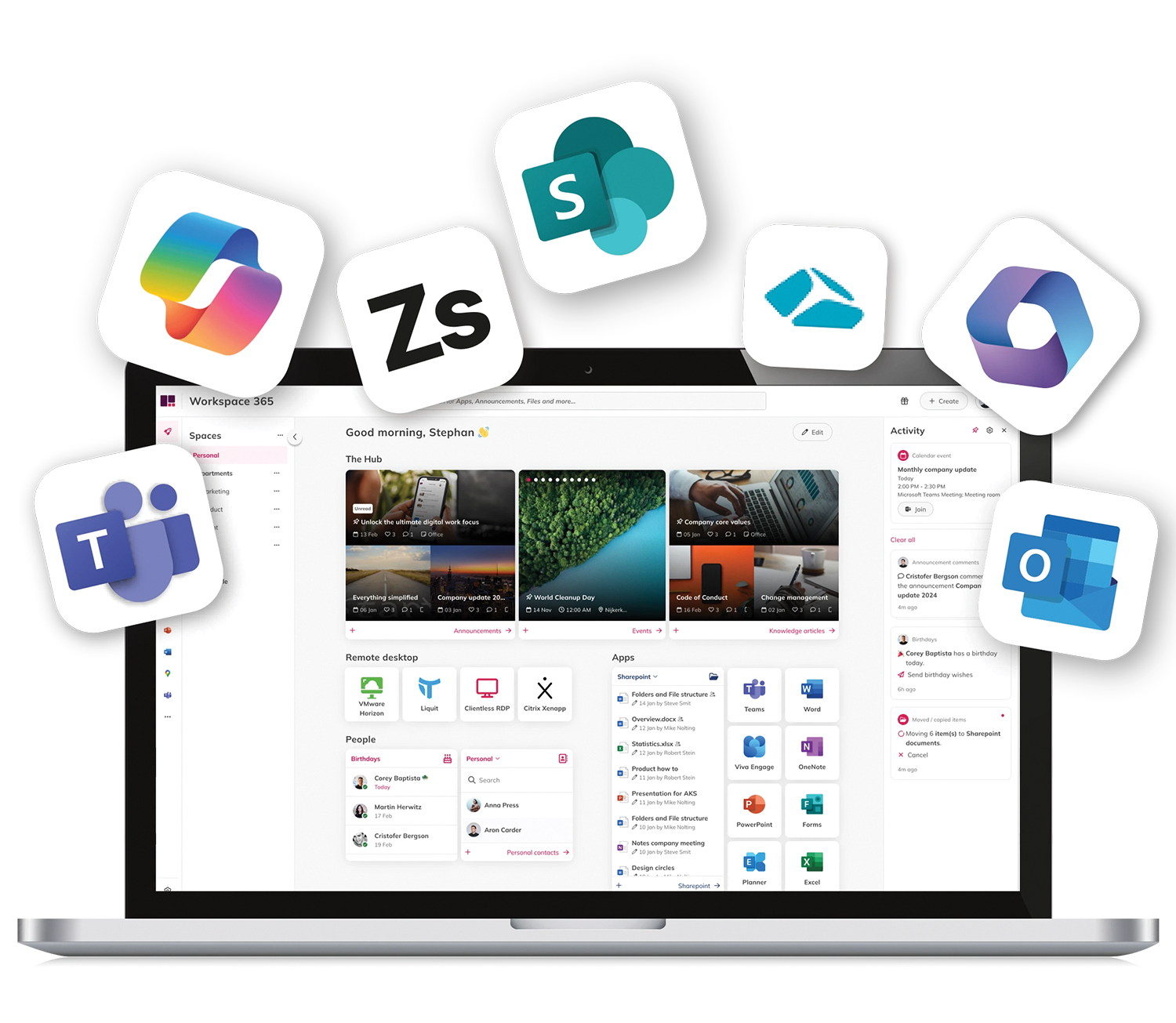If you don’t tackle online collaboration in the right way then communication becomes stale, employees get frustrated, a gap opens up between home and office workers, and home workers feel neglected or excluded. The following tips and tools will help you to make a success of online collaboration.
Making online collaboration work
Endless meetings, paper documents, not having timely access to certain information or files: these kinds of drawbacks of traditional working have made us see online collaboration as faster and smarter. Research by Deloitte shows that three quarters of those surveyed believe that online collaboration tools increase productivity by at least 20 to 25 per cent.
The challenges of online collaboration
Not thinking through the process of online collaboration poses the following challenges:
The use of different tools
If virtual collaboration is not properly organised, there is a risk that different tools will be used for the same purpose. It could be that one team uses Asana for project management and another uses Trello. Not a good idea when you need to work together. Not only does this create silos between teams and employees, it also leads to loss of productivity and unnecessary investment of time and money IT.
Other versions of documents
Especially when working with traditional (offline) text files and spreadsheets, it quite often happens that different versions of documents are in circulation.
Deficient communication
Communication deteriorates when people do not use collaboration tools properly and/or when agreements about the communication tools have not been made effectively. A complicating factor: online, you have fewer opportunities for non-verbal communication. Face to face, for example, it is easier to signal that a colleague agrees, but very reluctantly.
Not knowing what others are doing
When people work remotely, do not have meetings in person and collaboration tools are not used properly, then as colleagues they cannot know exactly what everyone is doing and what is going on.
Lack of togetherness
It has been proven time and again that, at a social level, that online communication cannot fully replace its live counterpart. If there are not enough physical meetings, people feel less connected to their colleagues and the company and misunderstandings occur more quickly.
Tips for online collaboration
Fortunately, in the face of all the challenges, there are more than enough tips and tools to avoid the pitfalls. Let’s start with the tips:
Level playing field for online meetings
Collaborating online means having meetings online too. A known problem is that online meeting participants feel less involved than their colleagues at the office. Therefore, create a so-called level playing field. In such a level playing field, everyone in the office has their own laptop and preferably also their own room.
Minimise the number of meetings
If you do not necessarily need to consult but mainly exchange information, then scrap the meeting and turn to project management or instant messaging tools. This is more efficient and provides more flexibility.
Organise regular check-ins with each other
As important as tools for online collaboration and instant messaging are, it is important to speak to each other regularly. Both online and in real life. This creates a deeper level of interaction. Another tip: always plan a little extra time for online meetings, so you can discuss both business and personal issues afterwards. See this as an investment in employee wellbeing and productivity.
Agreements that everyone feels comfortable with
When collaborating online, clear agreements are important because things take a somewhat less natural course than in the office. For example, make agreements about fixed office days, which means of communication are used for what, how conflicts are resolved, how decisions are made and whether there is a level playing field at meetings. It is important that everyone feels comfortable with the agreements, because every team and every employee have their own wishes and needs.
Actively work on company culture
It is more difficult to create company culture online. Managers should therefore think about how online collaboration relates to company culture, lead by example in communicating the culture, and have policies and events in place that create and sustain the culture.
Tools that help with efficient online collaboration
Tools are an important technological basis for efficient and effective online collaboration. Examples that come to mind are:
Document management system
Having a good document management system (DMS) is beneficial for collecting, tracking, sorting and storing electronic documents such as text files, images, PDFs and digitised paper documents. This ensures that employees always have the correct and most up-to-date files.
Workspace 365 uses, for example, SharePoint, OneDrive and the network drive as the basis for a user-friendly DMS, where everything is displayed within a single document application.
Tools for real-time collaboration in files
Related to this: the hassle of different versions of documents being in circulation can be avoided using SaaS tools for real-time file collaboration. There is then only one version of the document, which is always up-to-date. In addition, you can see what adjustments your colleagues are making in real time. This is possible, for example, with Microsoft 365 Office applications.
Social tools
An important tool for both communication and social interaction is an intranet. Modern intranets are social, interactive and personal, and can be integrated with all kinds of other business applications. They include functionalities such as news, contact information, centralised access to documents, collaboration possibilities, calendars and planning systems, etc.
You can also think about tools that allow you to socialise online. Create social communities in Yammer, for example. And of course, you can organise a Friday afternoon drink via Teams, but for a next-level virtual meeting you can also meet each other in the metaverse thanks to a tool like Mibo.
Digital workspace
An important tool that can integrate many of the above tools is – as we will explain below – a digital workspace such as Workspace 365. With a digital workplace you can also ensure that everyone uses the same tools.
Workspace 365: one environment for everything
In Workspace 365, all applications, information, documents, processes, tasks and the intranet are combined and offered in a personalised way within one environment. This applies not only to cloud or web applications: legacy systems and remote desktops can also be integrated.
The most important tasks and notifications can be integrated within the Activity feed. This allows employees to process information more efficiently and perform tasks quicker without leaving the digital workspace.
Moreover, tasks, information and processes for both individuals and groups of users can be extracted from external systems and offered in a smart way and at a time that is relevant to them. A high level of personalisation is possible: what is shown on the dashboard depends on a number of factors including a person’s role, location, network and device.
Finally, Workspace 365 makes it possible to integrate the intranet and individual intranet elements within the digital workspace or vice versa.






